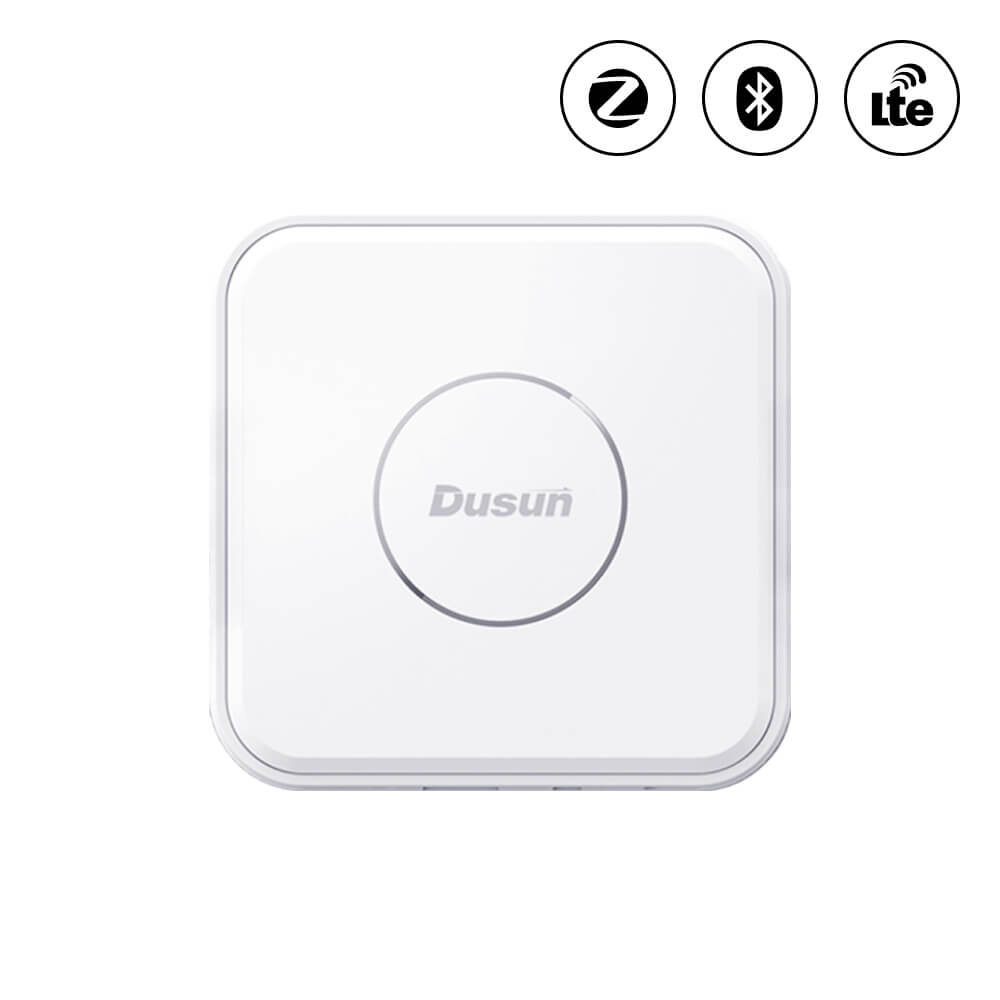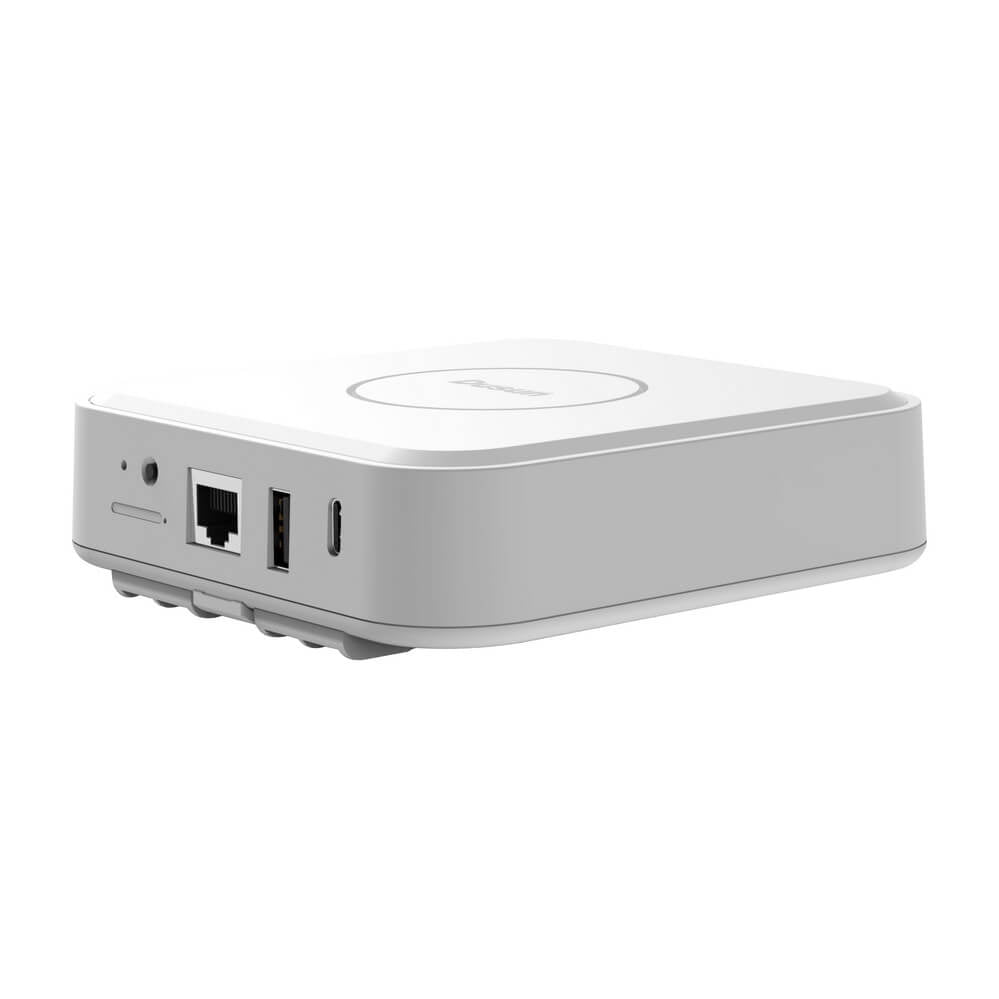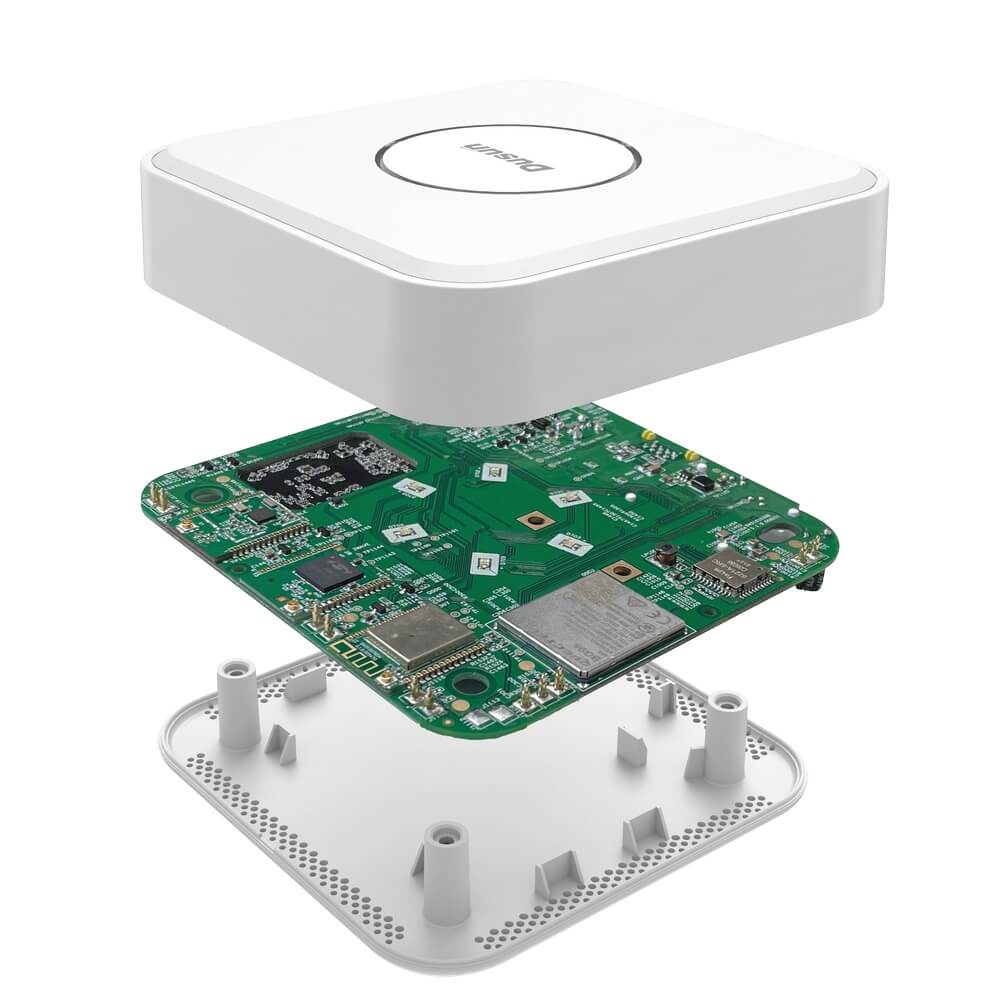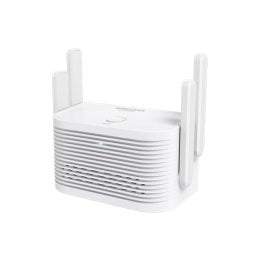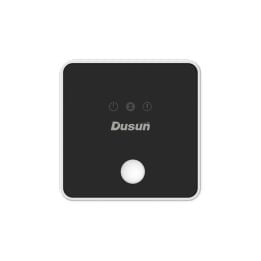Quick View of DSGW-210-F-1 Smart Multiprotocol Gateway Hub
The DSGW-210-F-1 IoT edge gateway offers versatile connectivity options and edge computing capabilities, making it suitable for various applications across multiple fields. Key areas include smart homes, industrial IoT, agriculture, energy management, transportation, healthcare, smart cities, and retail.
DSGW-210 Smart Edge Computing Gateway has successfully achieved qualification for Amazon Web Services (AWS) IoT Greengrass, thus accelerating the deployment and scalability of edge-to-cloud applications.
Silicon Labs Multiprotocol SoCs
Dusun IoT has build a long-term partnership with Silicon Labs and DSGW-210-F-1 Multiprotocol Gateway Hub uses multiple Silicon Labs’ wireless SoCs, especially for BLE, Zigbee/Matter, etc.
Improved Performance
With multiple wireless protocol support, DSGW-210-F-1 Gateway Hub can act as a bridge to facilitate smooth communication among devices using different wireless protocols, in order for efficient data transfer and device management, faster response times and reduced latency.
Enhanced Integration
DSGW-210-F-1 Multiprotocol Gateway Hub ensures compatibility with a wide range of devices, simplifying the overall system architecture and making the deployment streamlined.
Features of DSGW-210-F-1 Smart Multiprotocol Gateway Hub
Wireless and Wired Backhaul Options
With wireless WiFi and 4G LTE as well as wired Ethernet backhauls, you have the flexibility to choose the one best suits your needs.
Multi-Protocol Gateway Hub
Built-in modules allow for seamless multi-protocol operation and enables flexible networking methods, serving as a central point for networks.
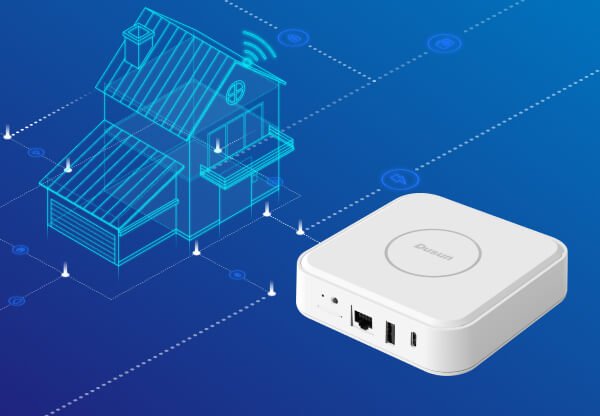
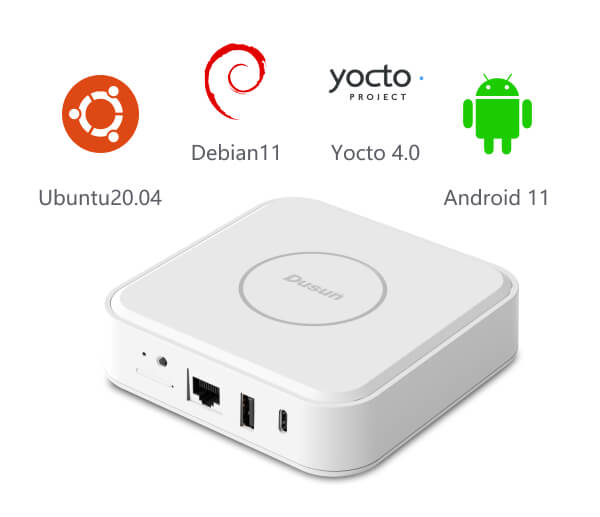
Supporting Multiple OSs
DSGW-210-F-1 is a versatile IoT gateway platform capable of running various operating systems such as Debian 11, Ubuntu 20.04, Android 11, and Yocto 4.0 and applications catering to various use cases.
Programmable
DSGW-210-F-1 gateway hub provides IoT gateway developers with the ability to build custom firmware starting from the bottom layer of the hardware, offering full control over the gateway’s functionality.
Modular Design
DSGW-210-F-1 multiprotocol gateway hub incorporates modular design and allows for customization and cost optimization by removing unnecessary connectors and features.
Pre-Certified
DSGW-210-F-1 multiprotocol gateway hub is pre-certified, saving significant time and resources for developers and manufacturers, speeding up time to market.
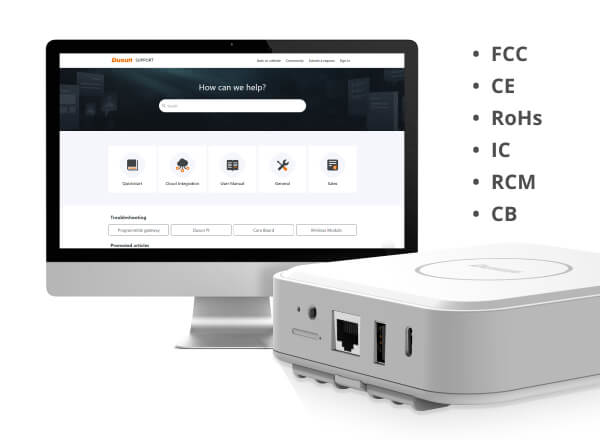
Inner Board and Package List of DSGW-210-F-1 Multiprotocol Gateway Hub
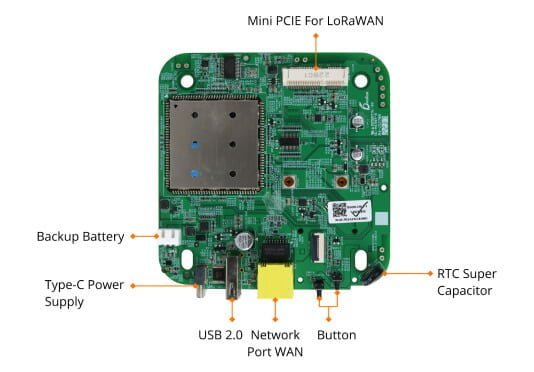
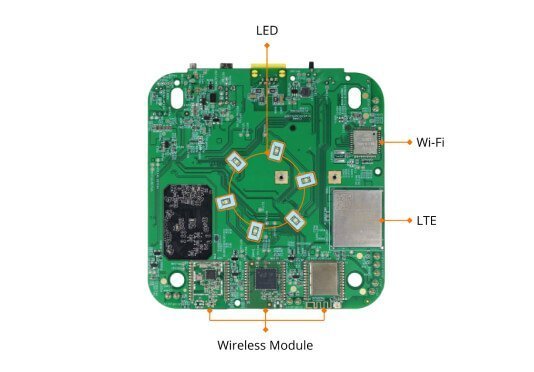

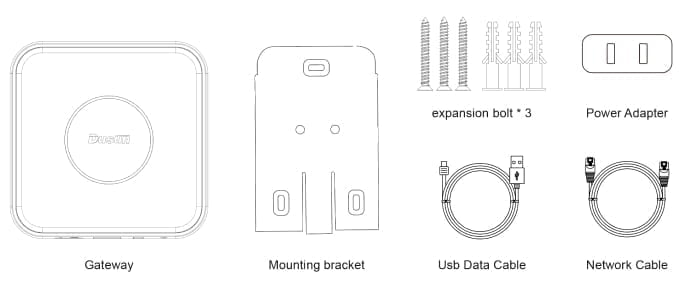
Parameters of DSGW-210-F-1 Multiprotocol Gateway Hub
| CPU | RK3328 Quad-core Cortex A53 |
| System | Debian 11,Ubuntu 20.04, Android11,Yocto4.0 |
| RAM | Up to 2GB |
| eMMC | Up to 32GB |
| SD card | Up to 128GB |
| Power Supply | USB Type-C 5V/3A |
| Reset | Factory reset button. To reset the Gateway to its original factory settings, press and hold it for more than 10 seconds |
| Switch | On/Off power |
| Network Interface | 1 * WAN/LAN variable |
| USB | 1 * USB2.0 |
| SIM | 1 * Micro SIM card slot |
| SD | 1 * SD slot |
| Indicator LEDs(RGB) | 1). Power & battery LED 2). Wireless LED 3)LTE indicator |
| Antenna | Zigbee/BLE PCB Antenna, Wi-Fi FPC Antenna |
| Li Battery | 5000mAH |
| Installation method | Flat, Ceiling, Wall Mounting |
| RTC | Real-Time Clock operated from an onboard battery |
| Hardware encryption | ECC608B |
| Operating Temperature | -10℃~60℃ |
| Storage Temperature | -40℃~65℃ |
| Operating humidity | 10%~90% |
| IP rating | IP22 |
Use Cases of DSGW-210-F-1 Multiprotocol Gateway Hub
Developer Resources of DSGW-210-F-1 Multiprotocol Gateway Hub
| Development | ||
|---|---|---|
| [QUICK START] | DSGW-210 Smart Programmable Gateway Quick Start Guide | V2.0 |
| [SDK] | DSGW-210-Debian_sdk_RV1.1.7 | V1.1.7 |
| [WEB Description] | Web-Description-Gateway-OldLuci .pdf | |
| [WEB Description] | DSGW-210-Web-Description | imageRV1.2.3 |
| [Language C Sample Code] | Zigbee_sample_code_Amber_host_EZSP_V8.tar | V8 |
| [Language C Development Guide] | Zigbee sample code ezsp development guide v1.0 | V1.0 |
| [Language Python Sample Code] | DSGW-210_Python_sample.tar | |
| [Language Python Development Guide] | DSGW-210 Python Development Guide V1.0 | V1.0 |
| [Firmware packaging] | DSGW-210-Debian_image_RV1.2.0 | V1.2.0 |
| [Zigbee module firmware] | DSM-04B-zigbee_image_RV8(EZSP)Version:ezsp ver 0x08 | V ezsp ver 0x08 |
| [Ble module firmware] | DSI-0177-AMBER-BLE-NCP_AV3.2.4.0129 | V 3.2.4 |
| Yocto | ||
|---|---|---|
| [QUICK START] | DSGW-210-Yocto Development Document.V1.0.pdf | V1.0 |
| [SDK] | DSGW-210_sdk-yocoto_AV1.0.0.0.tar.gz | V1.0.0.0 |
| [Firmware packaging] | DSGW-210-Yocto_image_AV1.0.0.1.tar.gz | V1.0.0.1 |
| [Zigbee module firmware] | DSM-04B-zigbee_image_RV8(EZSP)Version:ezsp ver 0x08 | V8 |
| [Ble module firmware] | DSI-0177-AMBER-BLE-NCP_AV3.2.4.0129 | V3.2.4.0129 |
| Ubuntu | ||
|---|---|---|
| [QUICK START] | DSGW-210-Ubuntu Development QuickStart.V1.0.pdf | V1.0 |
| [SDK] | DSGW-210_sdk-ubuntu_AV1.0.0.2.tar.gz | V1.0.0.2 |
| [Firmware packaging] | DSGW-210_image-Ubuntu_AV1.0.0.2.tar.gz | V1.0.0.2 |
| [Zigbee module firmware] | DSM-04B-zigbee_image_RV8(EZSP)Version:ezsp ver 0x08 | V8 |
| [Ble module firmware] | DSI-0177-AMBER-BLE-NCP_AV3.2.4.0129 | V3.2.4.0129 |
| Tools | ||
|---|---|---|
| [Burning tool] | AndroidTool_Release | |
| [Upgrade_tool] | DriverAssitant_v4.91 | V4.9.1 |
| Third-Party Software | ||
|---|---|---|
| [Node-RED] | node-red | |
| [Docker] | docker | |
| [Ble2Mqtt] | BLE2Mqtt message API v1.7 | V1.7 |
| [Zigbee2Mqtt] | Zigbee2Mqtt Source Code & How To Install and Deploy[Dusun] | V2.2 |
| [Openthread] | OpenThread For OTBR | |
| [Matter] | Matter Chip-tool Document | |
Connectivity of DSGW-210-F-1 Multiprotocol Gateway Hub
Category A ( In Stock,)
| Feature | Wi-Fi 2.4G/5G | Bluetooth 5.2 | Zigbee 3.0 | LTE CatM1 | LTE Cat1 | Li Battery | LTE Cat4 |
|---|---|---|---|---|---|---|---|
| DSGW-210-F-1 | ● | ● | ● | ● | ● |
Distributor Purchase
| Distributor | Model |
|---|---|
 |
DSGW-210-F-1-UK |
 |
DSGW-210-F-1-CN |
 |
DSGW-210-F-1-AU |
 |
DSGW-210-F-1-EU |
FAQs of DSGW-210-F-1 Multiprotocol Gateway Hub
With so many protocols on one hub, how could manage their coexistence? Especially multiple 2.4 GHz wireless technology running on the same frequency?
About multiple wireless protocol coexistence and signal interference challenges, Dusun IoT is an expert in handling this issue. You can check our R&D page to view our capability. We had a case study on multiple Zigbee gateway development, in which we introduced our methods on how we ensure that signals between the diverse modules remain free from interference. About 2.4G wireless protocol signal interference, please view the article on how to manage wireless coexistence.
What does a gateway hub do?
As we mentioned before, DSGW-210-F-1 Multiprotocol Gateway Hub support multiple protocols and can serve as a central hub for connecting devices or networks that use different protocols, making them communicate and interact with each other.
The built-in multiple protocol modules handle the translation and conversion of data packets between different protocols, converting their messages to a universal language and ensuring compatibility and interoperability between devices or networks.
Is gateway and a hub the same thing?
Although the terms “gateway” and “hub” are often used interchangeably by a lot of people, they refer to different concepts in the context of networking.
A gateway acts as a translator performing protocol conversion function. In the context of the Internet of Things, a gateway is commonly used to connect IoT devices to the internet or a cloud-based platform.
A hub is a device that connects multiple devices within a network. A gateway usually have hub-like capabilities, such as connecting multiple devices to a network, but it also serves a broader purpose of facilitating communication between different networks.
Is a gateway needed for smart home?
Yes, current smart home ecosystems are interconnected by a variety of IoT devices using different protocols, including Zigbee, BLE, WiFi, etc. Among these, Zigbee, and BLE are non-IP protocol, meaning they do not have direct internet connectivity.
In order to connect these devices to the internet and enable remote control, monitoring, and integration with other services, a gateway acts as a translator or bridge between the non-IP devices and IP-based networks. For more introduction, please view our article on Why IoT Gateway is Necessary to Smart Home?









